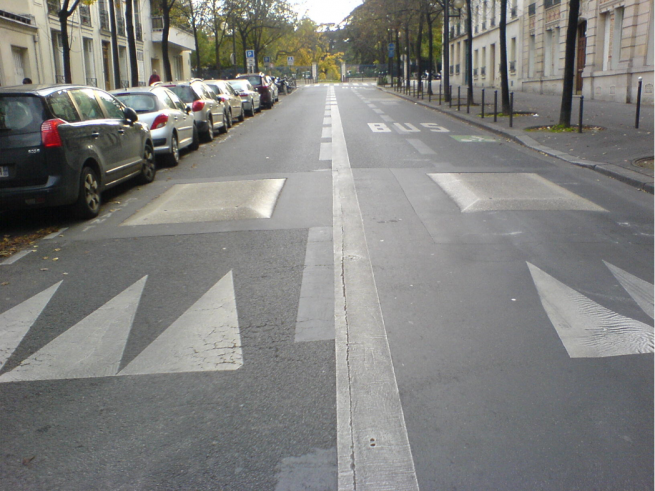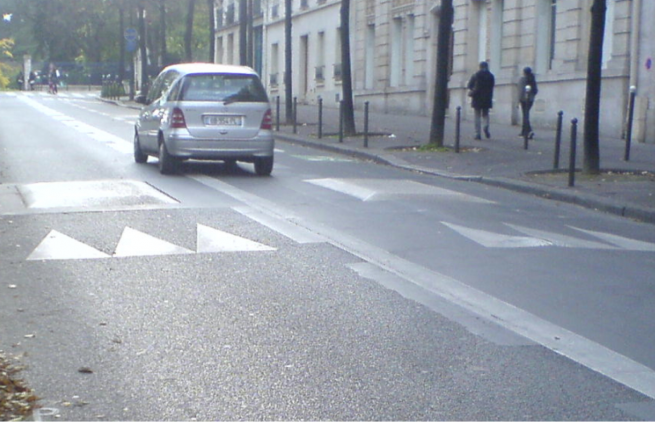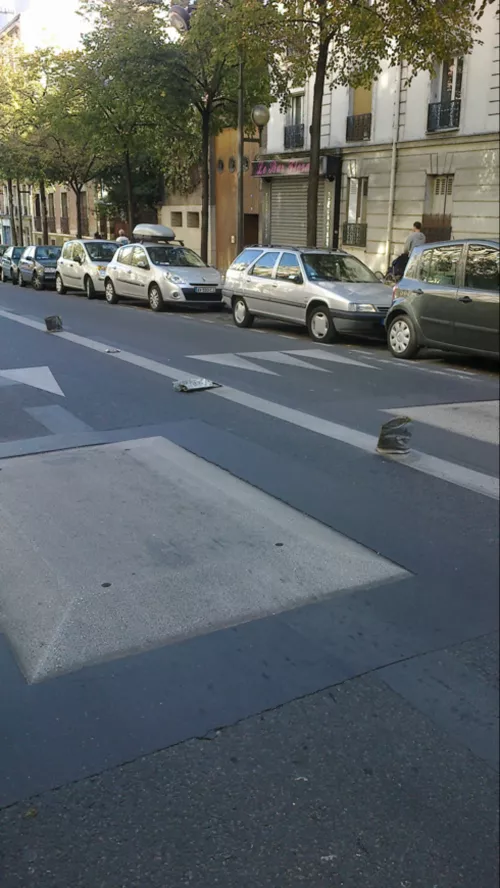1501 Speed Bumps madness
Mangrovia is the place where Roberto Casati and Goffredo Puccetti talk about design. This conversation has started in December 2013. We are interested in the intellectual intricacy of design. We keep our eyes open on good and bad design – equally important for us. Equally important are theory (mostly from cognitive science) and practice (mostly form communication and process design).

Mangrovia è dal dicembre 2013 la bacheca appunti di Roberto Casati e Goffredo Puccetti sul design. Il design ci interessa per la sua complessità intellettuale. Cerchiamo intorno a noi esempi di buono e cattivo design e ne parliamo prendendo spunto dalla teoria (soprattutto dalle scienze cognitive) e dalla pratica (soprattutto dalla comunicazione e dai processi di progettazione).
Speed bumps are quite effective in slowing down traffic. Provided they are clearly visible and wear their heart on their sleeve. France uses at least two types of speed bumps (they were cozily called “sleeping policemen”, “gendarmes couchés”): prism-like center bumps, and hilly, rounded bumps that go from sidewalk to sidewalk. On top of that, there are other methods that basically shrink the lane so that only one car at a time can drive in either direction; more about this in another post.

Paris, Avenue Reille. Affordances rule the world. Image credit: Roberto Casati
The effectiveness of the bump comes from the fact that it is mandatory to drive over it. If one is given an option, it will not be surprising if one will go a long way in oder to avoid the bump. Here is a dramatic case from Paris.

Paris, Avenue Reille. Users only understand affordances. Image credit: Roberto Casati
A few years back, prism-like bumps were placed on each lane in Avenue Reille. They do not go from sidewalk to sidewalk, but only occupy the center of each lane (presumably to give motorbikes and bicycle a chance to slip through – understandably so, as bikers are more heavily affected by bumps than car drivers.) But the open space between bumps is enough for a car to pass. Thus cars simply avoid the bump and behave in an almost-illegal way, as you are not supposed to drive on the dividing line.
Immediately after the bumps got installed, someone noticed the problem, and had plastic poles erected on the middle line. They were history in about one week, as drivers ignored them and run over them. User experience rules the world.







